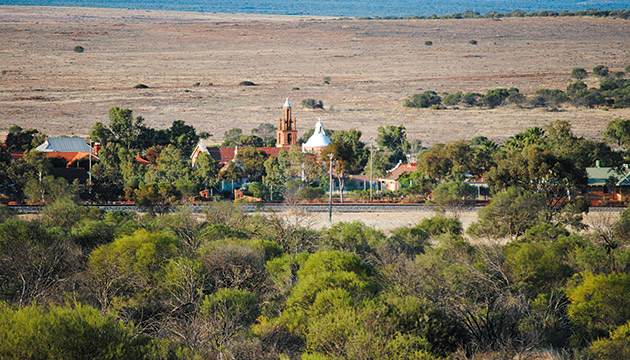Tourists visiting remarkable Mullewa find a close community dedicated to sharing the history and traditions of their small town.
Story By Brooke Olive
At first glance Mullewa appears to be a typical northern Wheatbelt community. However, on closer inspection visitors will find that the West Australian town offers a most unique opportunity to step back in time and explore the rich cultural history of the area.
John Davis, an early pastoralist, first wrote to the government in 1861 requesting approval to take up land around Mullewa Spring. By the time gold was discovered in the surrounding Murchison region the town was already an important transport hub. Its first railway station had been established in 1894 and became the termination point of the famous De Grey Stock Route, which was used to move stock from the Kimberley to Perth. Today Mullewa is a close-knit community of farmers, teachers and families. One of Western Australia’s primary agricultural areas, its broadacre grain farms produce more than 250,000 tonnes annually.
“I like living in Mullewa for a lifestyle that gives us quiet moments and plenty of activities when we need them, like craft, sport, a meal at the local sports club and much more, without having to travel very far,” says resident Erica Foreman. “There’s the convenience of a day out in Geraldton, only an hour away, where you can shop to your heart’s content or meet up with family and friends and go to a winery for lunch. And when travelling you get to see the beauty of the changing seasons. Wildflower season is a bounty I never tire of seeing.”
Taking its name from an Aboriginal word for ‘place of fog’, Mullewa is a place of beauty. Visitors flock to see the wildflowers that carpet the town’s surrounds. It also boasts a number of walking tracks that showcase the town’s Indigenous and early-settler history. One of the most popular is the Hawes Heritage Trail that tells the story of the kind, enigmatic Monsignor John Hawes, an architect turned priest who designed and helped construct 16 buildings in country Western Australia.
Another historical place of interest is the Butterabby graves site where two men were speared on separate occasions in 1864. The Indigenous men found responsible were tried in Perth then brought back and hanged in front of many Wajarri people. All were buried at the site, which is marked with a simple stone with inscriptions that are now indiscernible.
This story excerpt is from Issue #81
Outback Magazine: Feb/Mar 2012










